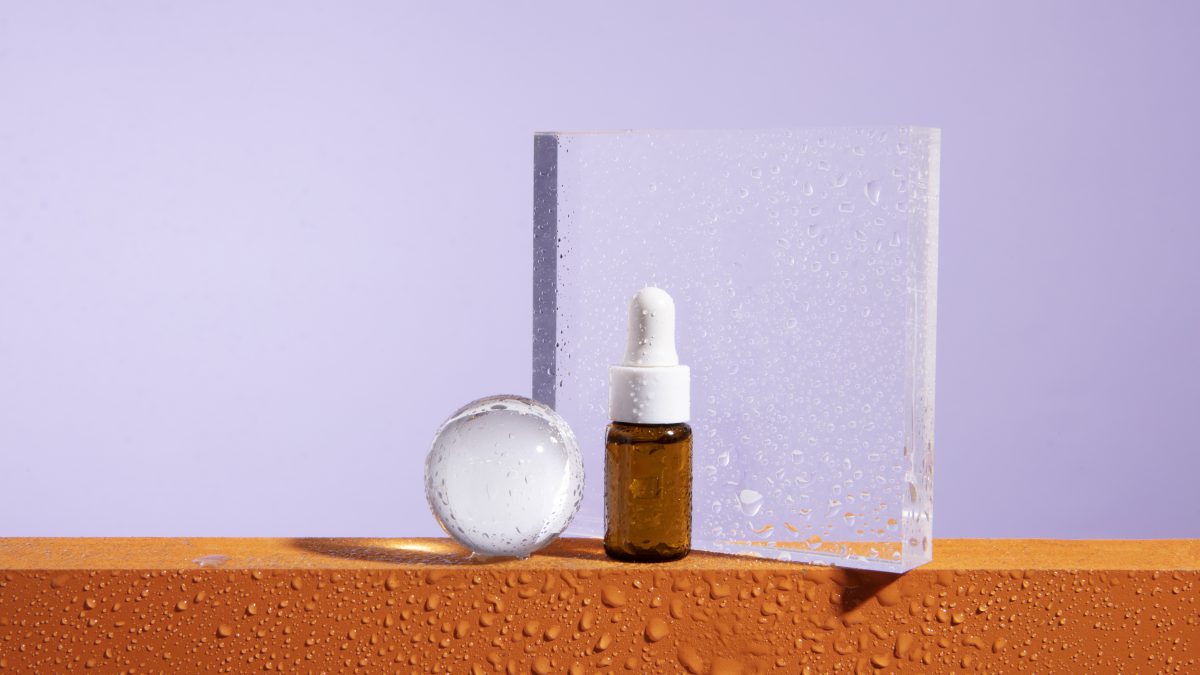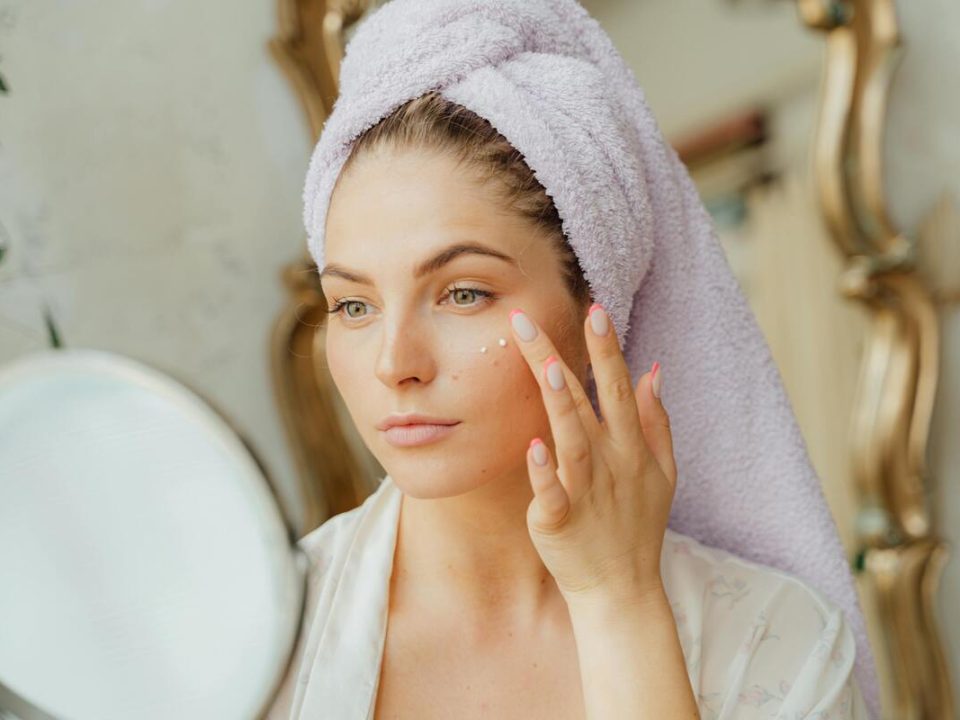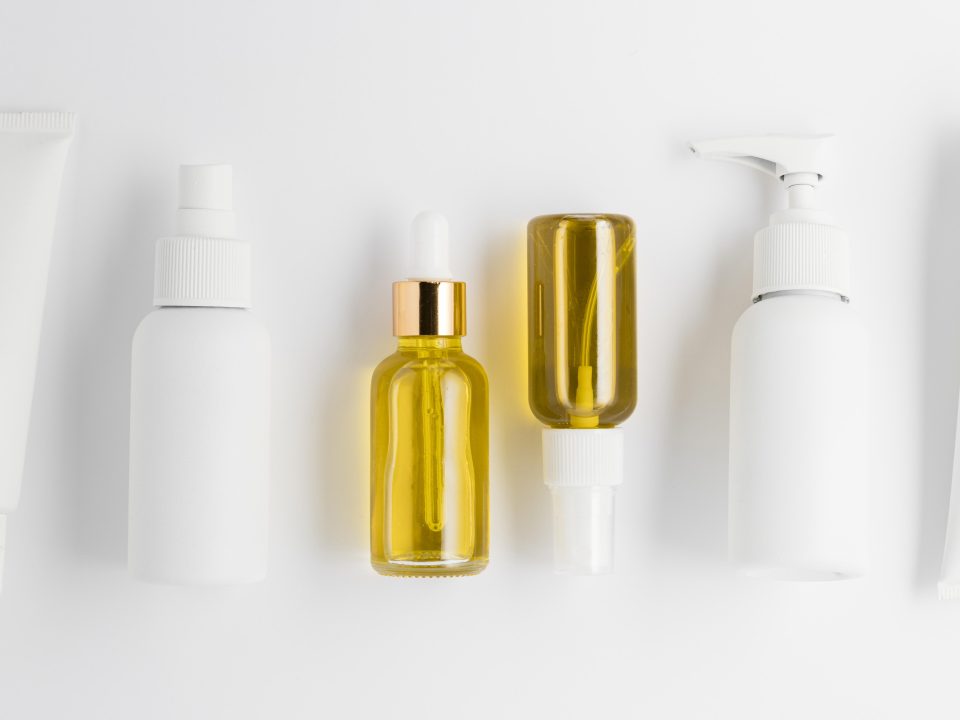What Does A Glycolic Acid Peel Do?
January 26, 2024
Does Glycolic Acid Unclog Pores?
January 26, 2024While the efficacy of salicylic acid is undeniable, its daily use remains a contentious topic. This exploration delves into the intricate balancing act between its powerful benefits and potential pitfalls. We will dissect the science behind its effects, analyze the spectrum of its applications, and navigate the safety concerns surrounding daily use. Ultimately, this journey aims to equip you with informed knowledge to determine if salicylic acid’s daily presence on your skin is a recipe for radiant success or a path to unforeseen irritation.
Benefits of Daily Salicylic Acid Use
Salicylic acid, a BHA (beta hydroxy acid), has earned its place as a skincare hero for its multifaceted benefits. While incorporating it into your routine can provide noticeable improvements, daily use unlocks its full potential, tackling various skin concerns with sustained efficacy. Let’s delve into the advantages of salicylic acid as a daily ally for your skin’s health.
Potential benefits for various skin concerns
Acne: Salicylic acid’s claim to fame lies in its potent acne-fighting abilities. It works by:
Exfoliating dead skin cells: It gently dissolves the sticky “glue” that binds dead cells, preventing them from clogging pores and leading to breakouts.
Reducing inflammation: Its anti-inflammatory properties soothe existing pimples and prevent new ones from forming.
Preventing clogging: Salicylic acid penetrates pores, dissolving sebum (oil) buildup and debris, which contributes to acne formation.
Dandruff: This BHA tackles flaky scalps by:
Loosening and removing dead skin cells: It prevents them from accumulating and creating visible dandruff flakes.
Reducing scalp flaking and itching: Its mild keratolytic (skin-peeling) effect promotes healthy skin renewal, alleviating dryness and irritation.
Calluses: Rough, hardened skin gets softened and sloughed off by salicylic acid, which:
Dissolves intercellular bonds: This weakens the cohesion of dead skin cells, making them easier to shed.
Promotes natural skin turnover: It encourages healthy cell renewal, preventing the buildup of hardened layers.
Psoriasis: For those struggling with this chronic skin condition, salicylic acid offers relief by:
Slowing down skin cell growth: It regulates the rapid, uncontrolled cell proliferation characteristic of psoriasis.
Reducing scales and redness: Its exfoliating and anti-inflammatory properties help remove excess skin buildup and calm inflamed patches.
Keratosis Pilaris: These tiny bumps on the arms and legs can be improved by salicylic acid, which:
Exfoliates bumps: It sloughs off dead skin cells that contribute to the rough texture and appearance of keratosis pilaris.
Improves skin texture: Regular use leads to smoother, more even-toned skin.
Studies and research findings supporting daily use for specific conditions
Acne: Studies comparing daily and alternate-day salicylic acid application in acne treatment found that daily use was more effective in reducing breakouts and maintaining improvement over time.
Dandruff: A study exploring the efficacy of a daily salicylic acid shampoo reported significant reductions in dandruff severity and itchiness compared to intermittent use.
Psoriasis: Research suggests that daily use of salicylic acid cream alongside standard psoriasis therapies offers sustained symptom control and reduces the likelihood of flare-ups.
Advantages of daily use over intermittent use:
Consistent results and faster improvement: Daily use ensures a constant dosage, leading to quicker and more noticeable results compared to sporadic application.
Prevents breakouts or flare-ups: Consistent use keeps pores unclogged and inflammation at bay, minimizing the chances of acne or other skin concerns recurring.
Maintains healthy skin: Salicylic acid’s exfoliating and anti-inflammatory properties promote healthy skin cell turnover and maintain a balanced skin barrier, leading to a clearer, brighter, and more even complexion.
Choosing the right concentration of salicylic acid is key to unlocking its amazing benefits without unwanted irritation. Think of it like this: for first-timers and sensitive souls, start low and slow with a gentle 1% or 2% concentration. As your skin gets acquainted, you can gradually increase to a higher concentration (up to 10%) if needed. But remember, it’s always better to be cautious than compromise your skin’s health. If you have sensitive skin or any doubts about incorporating salicylic acid into your routine, consulting a dermatologist is always the golden rule. They can assess your unique needs and recommend the perfect concentration and product to get you glowing!
Potential Concerns and Precautions with Daily Salicylic Acid Use
Skin irritation and dryness
Mechanisms: Salicylic acid works by dissolving the bonds between skin cells, promoting exfoliation. While this is beneficial for unclogging pores and removing dead skin, it can also disrupt the skin’s natural barrier function, leading to dryness and irritation. This is especially true for individuals with sensitive skin or those using high concentrations of salicylic acid.
Common symptoms: Redness, stinging, burning, tightness, itching, flaking, peeling, and increased roughness are common signs of irritation. In severe cases, eczema-like dermatitis may develop.
Factors influencing irritation: Concentration of salicylic acid, frequency of use, skin type, sensitivity, application over broken skin, and concurrent use of irritating products all play a role.
Management: Patch testing before regular use is crucial. Start with low concentrations and apply less frequently until your skin adjusts. Moisturize generously after application, and consider a milder cleanser. If irritation persists, reduce frequency or stop using and consult a dermatologist.
Over-exfoliation and impaired skin barrier
Risks: Excessive exfoliation can strip away the skin’s natural oils and protective layer, leading to dryness, dehydration, and increased sensitivity to environmental factors like sun and harsh irritants. This can disrupt the skin’s microbiome, further compromising its barrier function.
Consequences: Impaired barrier function manifests as increased dryness, redness, stinging, and vulnerability to infections. Sensitive skin reacts more readily, but prolonged over-exfoliation can harm any skin type.
Preventing over-exfoliation: Listen to your skin! Watch for early signs of irritation and adjust frequency or concentration accordingly. Avoid combining salicylic acid with other exfoliating ingredients like alpha hydroxy acids (AHAs) or physical scrubs. Consider alternating with gentler products to give your skin a break.
Restoring the barrier: Focus on repairing the compromised barrier with hydrating ingredients like hyaluronic acid, ceramides, and glycerin. Look for products with soothing ingredients like aloe vera and colloidal oatmeal. Sunscreen is crucial to protect the vulnerable skin.
Sun sensitivity
Mechanism: Salicylic acid can thin the outer layer of the skin, making it more susceptible to UV damage. This increases the risk of sunburn, premature aging, and even hyperpigmentation.
Precautions: Always apply broad-spectrum SPF 30 sunscreen or higher before venturing outdoors, even on cloudy days. Wear protective clothing like hats and sunglasses. Avoid peak sun hours. Re-apply sunscreen every two hours, especially after swimming or sweating.
Additional tips: To shield your skin during sunny days, opt for sunscreens packed with mineral UV-blockers like zinc oxide or titanium dioxide, ensuring broad-spectrum protection without irritation. While salicylic acid remains your acne-fighting ally, consider a gentler formula or a nighttime switch during the summer, as the sun can amplify potential dryness or sensitivity. This way, you can keep breakouts at bay while maintaining a healthy, sun-kissed glow.
Interactions with other medications or products
Retinoids: Both salicylic acid and retinoids work by promoting exfoliation. Combining them can be too harsh for the skin, leading to severe irritation and dryness. Use them on alternate days or consult a dermatologist for a personalized regimen.
Benzoyl peroxide: While both target acne, combining them can be overly drying and irritating. Start with one and slowly introduce the other, monitoring your skin’s reaction.
Harsh cleansers and chemical peels: Avoid using these alongside salicylic acid as they can further disrupt the skin barrier. Opt for gentle cleansers and avoid aggressive exfoliating treatments.
Medications: Salicylic acid can interact with certain medications like blood thinners and aspirin. Always consult your doctor before using it if you’re on any medication.
Considerations for different skin types
Sensitive skin: Opt for the lowest concentration of salicylic acid available and apply it infrequently. Choose gentle, fragrance-free formulations and patch test before regular use. Moisturize religiously and prioritize sun protection.
Oily skin: Oily skin can tolerate higher concentrations, but be mindful of over-exfoliation. Start with a moderate concentration and adjust based on your skin’s response. Focus on balancing oil production with hydrating ingredients.
Dry skin: Dry skin is highly susceptible to irritation from salicylic acid. Use very low concentrations, apply sparingly, and prioritize intense hydration. Consider using it only as a spot treatment on blemishes.
Pregnancy and breastfeeding
Concerns: While topical salicylic acid offers clear benefits for managing skin concerns, its use during pregnancy and breastfeeding requires a cautious approach. Despite limited research suggesting safe use in low concentrations, the jury’s still out on its absolute safety, especially at higher levels. Concerns lurk around potential absorption into the bloodstream at high concentrations, prompting experts to advise against exceeding recommended dosages and urging expectant and nursing mothers to seek their healthcare professional’s guidance before incorporating salicylic acid into their routine. Remember, prioritizing safety takes precedence, and alternative solutions might be preferable during these delicate stages.
Recommendations: Consult your doctor before using salicylic acid during pregnancy or breastfeeding. Stick to low concentrations and avoid large application areas. Breastfeeding mothers should avoid applying it near the chest to prevent accidental ingestion by the baby.
Remember, clear skin is just one aspect of healthy skin. Prioritizing overall skin health should always be your top priority when tackling blemishes. This means using salicylic acid alongside gentle cleansing, adequate hydration, and sun protection. Listen to your skin and adjust your routine as needed, avoiding practices that may compromise its overall well-being.
Safe Daily Use Practices and Product Recommendations
Choosing the Right Product
Concentration:
Low (0.5% – 1%): Ideal for sensitive skin, mild acne, and general maintenance. Gentle exfoliation, suitable for daily use. Examples: cleansers, toners, and moisturizers.
Medium (1% – 2%): Effective for moderate acne, oily skin, and blackheads. Exfoliates more effectively but may cause slight dryness. Examples: serums, leave-on treatments, and spot treatments.
High (2% – 5%): Reserved for stubborn acne, oily skin, and deep-seated blackheads. Strong exfoliation potential, best used for targeted areas or intermittently. Examples: masks, peels, and spot treatments.
Form:
Cleansers: Gentle daily option for removing excess oil and dead skin cells. Convenient but may not offer targeted treatment.
Toners: Refreshing and clarifying, good for oily skin and mild breakouts. Can be drying, use on bare skin with caution.
Serums: Concentrated delivery of salicylic acid, ideal for targeted treatment of acne and blemishes. Absorbs quickly, layer with moisturizer.
Moisturizers: Hydrate and soothe skin while providing low-dose exfoliation. Good for daily use, choose oil-free options for oily skin.
Patches: Ideal for targeted treatment of individual pimples or blemishes. Can be more intensive than other forms, use for short periods.
Brand Considerations:
Look for reputable brands with transparent ingredients lists. Avoid harsh chemicals or fragrances.
Choose brands based on your skin type and concerns. Sensitive skin may benefit from hypoallergenic or fragrance-free formulas.
Consider dermatologist-recommended brands for optimal results and safety.
Patch Testing and Proper Application
Always patch test before applying any new salicylic acid product to a larger area. Apply a small amount to your inner arm or jawline and wait 24 hours for any reaction.
Cleanse your face gently with a mild cleanser before applying salicylic acid products. Pat skin dry, avoid rubbing.
Start with a low concentration and apply sparingly once a day, preferably at night. Gradually increase frequency and concentration as tolerated.
Apply in circular motions, focusing on affected areas. Avoid sensitive areas like eyes and lips.
Wait 15-20 minutes before layering other products to allow the salicylic acid to absorb.
Follow with a moisturizer suitable for your skin type to prevent dryness and irritation.
Moisturizing and Sun Protection
Moisturizing is crucial to counteract the drying effects of salicylic acid. Choose a non-comedogenic moisturizer for oily skin and a hydrating formula for dry skin.
Apply moisturizer morning and night, even after cleansing with salicylic acid products.
Sun sensitivity is increased with daily salicylic acid use. Apply a broad-spectrum sunscreen with SPF 30 or higher every day, reapply every 2 hours.
Wear a hat and protective clothing to further shield your skin from the sun.
Additional Tips:
Limit exfoliation from other sources while using salicylic acid. Avoid harsh scrubs or physical exfoliation methods.
Be patient and consistent for optimal results. It may take several weeks to see the full effects of daily salicylic acid use.
Stop using salicylic acid immediately if you experience any signs of irritation, such as redness, burning, or stinging. Consult a dermatologist if symptoms persist.
Pregnant or breastfeeding individuals should consult their doctor before using salicylic acid.
By following these safe daily use practices and choosing the right products, you can maximize the benefits of salicylic acid while minimizing potential risks. Remember, individual skin types and sensitivities vary, so always adjust your routine and consult a dermatologist if needed.
Conclusion
We’ve explored the potential of salicylic acid as a daily tool for managing various skin concerns like acne, dandruff, calluses, and even mild psoriasis. Studies have shown its effectiveness in exfoliating, reducing inflammation, and promoting clear, healthy skin. However, the benefits vary depending on the specific condition and individual skin type.
Daily use comes with potential downsides like dryness, irritation, and increased sun sensitivity. Understanding these risks and implementing preventive measures like patch testing, proper application, and consistent moisturizing is crucial. Additionally, skin compatibility varies greatly, and some individuals may require a more cautious approach or different formulations altogether.
The key to safe and effective daily use lies in achieving a personalized balance. This involves choosing the right product form and concentration based on your specific needs and skin type. It also means listening to your skin, adjusting frequency if needed, and incorporating complementary products like moisturizers and sunscreen into your routine.
Salicylic acid offers a powerful tool for managing various skin concerns when used safely and intelligently. Daily use has its merits, but understanding the potential drawbacks and individualizing your approach are crucial. By being informed, responsible, and attentive to your skin’s needs, you can unlock the benefits of salicylic acid while minimizing risks and enjoying clearer, healthier skin. Remember, empowered knowledge and a personalized approach are the cornerstones of a successful daily salicylic acid routine.







